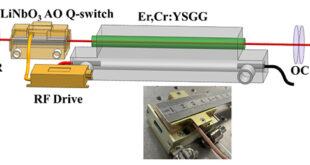Significance
In the field of experimental and theoretical investigations of ultrafast spin dynamics and spin transport, researchers often compare results obtained from different setups, such as variations in temperature, laser pulse characteristics, and sample composition. These variations inevitably lead to differences in observables, including magnetization and charge and spin currents. Moreover, they are closely linked to the degree of perturbation of a sample’s electron system. To gain a deeper understanding of these perturbations, it is essential to incorporate quantum state (QS) measures into our theoretical analyses. A new study led by Franziska Ziolkowski, Oliver Busch, Ingrid Mertig, and Jürgen Henk from the Institut für Physik at Martin Luther University Halle-Wittenberg in Germany, recently published in the Journal of Physics: Condensed Matter, investigated the benefits of using QS measures to analyze ultrafast spin dynamics, with a focus on their sensitivity to parameters such as the polarization of a laser pulse and sample composition. QS measures provide valuable insights into the perturbations and the coherence of quantum states under the influence of a laser pulse, complementing traditional observables.
The research team employed QS measures to quantify specific properties of quantum states, such as their distance in Hilbert space and their degree of mixing. The primary motivation is to understand how variations in experimental setups affect the perturbation of the electron system in inhomogeneous Co/Cu systems subjected to femtosecond laser pulses. Two distance measures, fidelity and trace distance, are used to assess deviations from a reference state, while two mixture measures, purity and von Neumann entropy, quantify the degree of disorder or information loss within the quantum states.
Quantum state measures have traditionally found applications in quantum information and quantum computing, where maintaining low levels of environmental perturbation is crucial, often necessitating extremely low temperatures. However, in the context of ultrafast spin dynamics, the deliberate choice of strong femtosecond laser pulses results in significant perturbation, leading to magnetization dynamics and currents. This dichotomy highlights the operational differences in purity measures, where quantum computing aims for “purity as large as possible,” while ultrafast spin dynamics seeks “purity as small as possible.”
To examine the degree of perturbation in ultrafast spin dynamics, the researchers represent quantum states using one-electron density matrices (ρ(t)), allowing them to investigate the time evolution of these states under the influence of femtosecond laser pulses in inhomogeneous Co/Cu systems. Various modifications of the experimental setup, including changes in laser pulse details and sample composition, are explored to determine their impact on the perturbation of the electron system.
The authors’ results reveal intriguing insights into the behavior of QS measures in the context of ultrafast spin dynamics. It becomes evident that these measures are sensitive to specific factors, notably the polarization of the laser pulse and sample composition. Furthermore, QS measures are closely related to magnetization and the number of photo-excited electrons, providing a deeper understanding of the underlying dynamics. The researchers systematically compare different setups to elucidate the impact of parameter variations. This comparison sheds light on how changes in the experimental conditions manifest in quantum state measures and observables. The intricate interplay between the microscopic quantum states and macroscopic observables underscores the complexity of ultrafast spin dynamics.
In conclusion, the new study highlights the valuable role of quantum state measures in advancing our theoretical understanding of ultrafast spin dynamics. While traditional observables provide essential insights into experimental outcomes, QS measures offer a complementary perspective, allowing us to quantify and characterize the degree of perturbation and coherence within quantum states. The sensitivity of these measures to parameters like laser pulse polarization and sample composition adds an additional layer of sophistication to our analyses. The researchers emphasized that the computational effort required to compute QS measures during simulations is modest compared to the invaluable insights gained. They encourage colleagues in the field to incorporate QS measures into their investigations of spin dynamics, recognizing the potential for deeper insights and a more comprehensive understanding of the underlying physics. Looking ahead, the study suggests exciting avenues for future research, including comparisons between THz and laser excitations, linear versus circularly polarized light, and different sample compositions. These comparisons promise to expand our knowledge of ultrafast spin dynamics, offering new opportunities for manipulating and controlling quantum states for various technological applications.
ACKNOWLEDGEMENT
“This work is funded by the Deutsche Forschungsgemeinschaft (DFG, German Research Foundation) – Project No. 328545488 – TRR 227, Project No. B04.”

References
Ziolkowski F, Busch O, Mertig I, Henk J. Ultrafast spin dynamics: complementing theoretical analyses by quantum state measures. J Phys Condens Matter. 2023 Jan 31;35(12). doi: 10.1088/1361-648X/acb479.
 Advances in Engineering Advances in Engineering features breaking research judged by Advances in Engineering advisory team to be of key importance in the Engineering field. Papers are selected from over 10,000 published each week from most peer reviewed journals.
Advances in Engineering Advances in Engineering features breaking research judged by Advances in Engineering advisory team to be of key importance in the Engineering field. Papers are selected from over 10,000 published each week from most peer reviewed journals.

